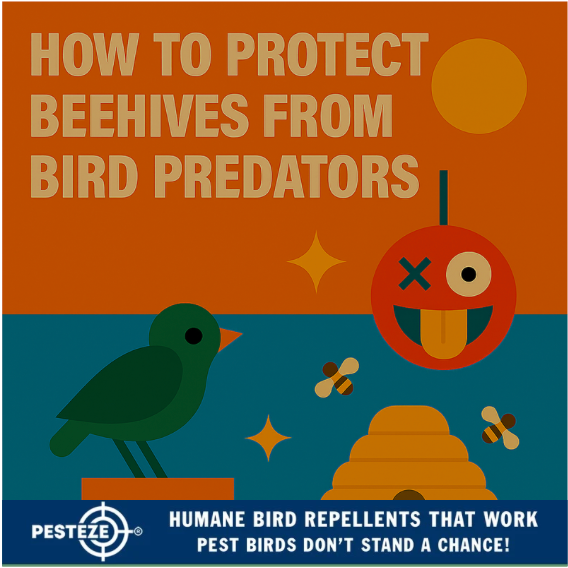HOW TO PROTECT BEEHIVES FROM BIRD PREDATORS

HOW TO PROTECT BEEHIVES FROM BIRD PREDATORS
SUMMARY
Bird predation threatens critical pollinator populations and agricultural productivity, creating complex challenges for beekeepers in 2025.
FEATURES
- Bee Colony Protection: Comprehensive strategies to prevent bird attacks on beehive populations.
- Agricultural Preservation: Methods to safeguard critical pollinator ecosystems.
- Ecological Balance: Approaches that protect both bee populations and local wildlife.
- Technological Innovation: Advanced deterrence techniques for beehive safety.
- Economic Sustainability: Strategies to minimize potential agricultural and honey production losses.
GUIDE DESCRIPTION
Beehives represent vulnerable ecosystems that attract various bird predators seeking easily accessible protein sources. Certain bird species, including woodpeckers, bee-eaters, and other insectivorous birds, pose significant threats to bee colony survival and overall hive productivity.
Birds are naturally drawn to beehives as concentrated food sources, presenting complex challenges for beekeepers seeking to protect their colonies. Understanding the specific predation mechanisms, bird species behaviors, and hive vulnerability becomes crucial for developing effective protection strategies.
Technological innovations in 2025 provide sophisticated solutions for managing bird interactions with beehives. Advanced sensor systems, intelligent deterrent technologies, and targeted environmental modifications offer comprehensive protection strategies that balance bee colony preservation with wildlife management.
Professional beekeepers must implement comprehensive protection protocols that address multiple environmental factors. Strategic hive placement, protective barriers, and intelligent deterrence techniques create comprehensive protection systems that minimize bird predation risks.
Scientific research provides critical insights into bird-bee interactions and predation mechanisms. Understanding local bird species, their hunting behaviors, and specific environmental characteristics becomes essential for developing effective intervention strategies.
Ecological considerations remain paramount in developing beehive protection approaches. Comprehensive strategies must balance bee colony preservation, wildlife management, and potential environmental impact while maintaining critical pollination ecosystems.
- Pukhraj Sharma


Comments 0